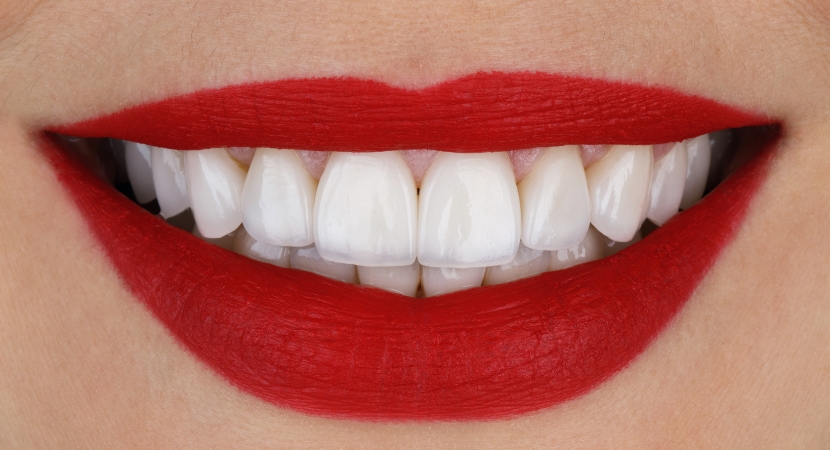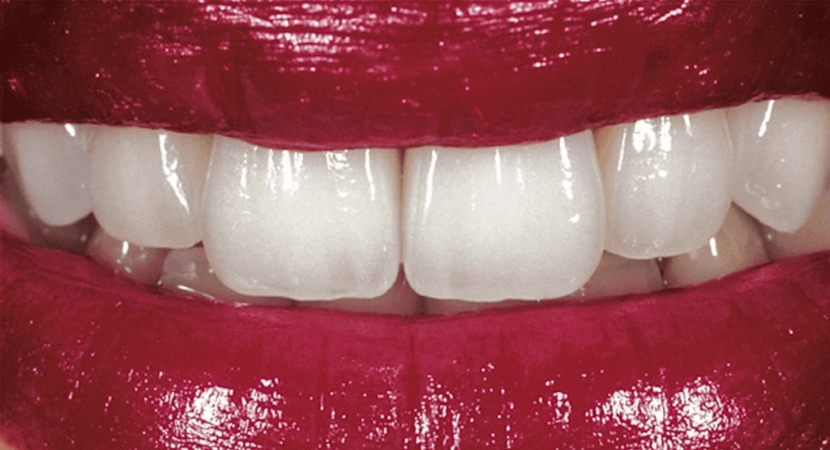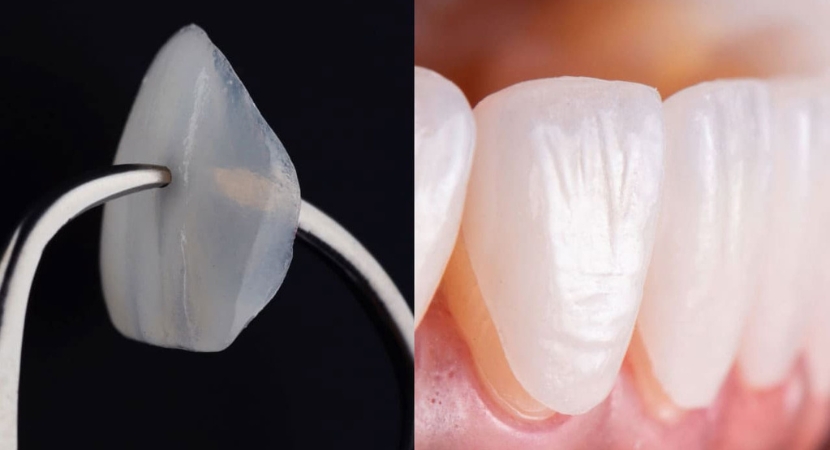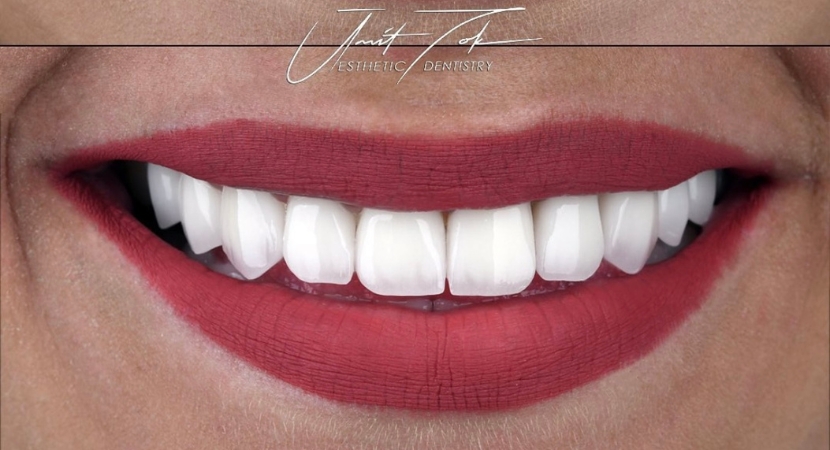
How are Emax Veneers and Crowns Made?
One after the other and with autoplay and play, pause, stop, rewind buttons.The global dental company Ivoclar (www.ivoclar.com) developed the first dental veneers and laminated crowns with a glass-ceramic coating that does not contain metal, providing high strength while offering superior aesthetic appearance, known as Emax.

What is Emax?
Emax is a highly durable material for crown coating, made from lithium disilicate material, a glass ceramic with good light translucency. These veneers are among the highest-quality materials used in restorative dentistry today.
The pressed lithium disilicate ceramic in the product provides an attention-grabbing aesthetic appearance by increasing light translucency and material transparency. Meanwhile, zirconium components ensure excellent durability that can withstand pressures ranging from 360-1000 MPa.

Emax Laminates
Laminated tooth
Laminated tooth veneers represent very thin porcelain caps that are bonded to the front surfaces of teeth to change their color and shape, enhancing their aesthetic appearance. As these coatings, previously made only of porcelain, were quite fragile and not durable, the search for new materials continued, and pressed glass-ceramic was developed.
Emax laminate
On the other hand, Emax laminates are durable veneers obtained by pressing and bonding porcelain onto glass-ceramic. Known as IPS Press, they are highly durable and offer aesthetics close to the appearance of natural teeth. The lithium disilicate present in the material withstands pressure very well, around 400MPa. This allows for the creation of ultra-thin, light-transmitting, durable, and aesthetic restorations.
Emax Dental Veneers
Dental crowns are restorations that cover the entire surface of the tooth and are applied to protect teeth damaged by caries, trauma, or large fillings.
Two different materials have been developed for Emax tooth crown veneers:
• IPS e.max CAD: This type allows the veneer to be produced in the clinic on the same day and is produced in accordance with CAD-CAM dental systems. To be processed in a clinical environment, these restorations, in the intermediate phase of crystallization and with a blue color, show resistance of 160MPa during the process and reach a strength of 500MPa after completing the crystallization. The light blue hues achieve their final natural color in this process.
• IPS e.max ZirPress: This type of restoration provides both the aesthetics of fluorapatite glass crystals and the natural strength of zirconia. Aesthetic restorations can be made by pressing porcelain onto these restorations, which are usually preferred for bridges and posterior teeth that require high strength. The product also has a ZirCad version prepared for processing with CAD-CAM devices.
Indications for Applying Emax Coating:
• Aesthetic applications for teeth and smile
• Colored and discolored teeth
• Broken or chipped teeth
• Crooked teeth
• Teeth that have undergone tissue loss and discoloration due to root canal treatment
• Laminated dental applications

Emax Porcelain
They are not preferred for bridges longer than 3 teeth due to the issue of breakage. Choosing Zirpress veneers for restorations on the posterior teeth and bridges will extend the life of the restoration.
Empress Dental
Empress teeth are known as restorations that can be made on glass ceramic cores, compressed under high pressure, without using a metal infrastructure. The infrastructure of this procedure, which consists entirely of porcelain, does not contain zirconium or a metal framework, as in porcelain veneers. The fact that there is no metal infrastructure, and it is literally made of ceramic, allows light to pass more clearly, giving the desired delicacy and shape in a more aesthetic way. This type of veneer literally mimics the color of natural teeth, along with the adhesive used in their placement. This achieves a more aesthetic and naturally healthy smile. With the production of more durable Emax porcelain coatings, interest in Empress applications has decreased.
Advantages and Disadvantages of Emax Coatings
Advantages:
• Completely natural appearance.
• High-quality aesthetic results.
• More effective than other types of coatings.
• Periodontal health benefits.
• Abrasion resistance and low fluid absorption.
• Easy correction of deformities and changes in tooth color.
• Achieves a younger appearance and dynamic smile.
• Helps correct misaligned teeth.
• Closes tooth gaps and reshapes teeth.
Disadvantages:
• Not recommended for long bridges in the posterior part of the mouth where there is high chewing force.
• Brittle and hard structure, which is not preferred in some critical applications. In such cases, zirconia coatings, combining durability and aesthetics, may provide better results.

Who is suitable for Emax dental treatment?
Emax dental treatment is suitable for a wide range of patients, and it is particularly favored in aesthetic applications. It is generally suitable for everyone and has shown successful results in patients with issues in their front teeth. Additionally, it can be easily applied to molars where strength requirements are lower than in front teeth. This treatment is ideal for individuals facing teeth discoloration due to aging, those who have undergone root canal treatments, and people with gaps between their teeth.
Emax or Zirconium?
What is the difference between these coatings?
The biggest difference between Emax and Zirconium coatings lies in the material used. While Emax teeth are made from lithium disilicate glass ceramic, Zirconium coating is made from zirconium oxide, obtained by adding yttrium oxide to pure zirconium.
To decide which one to choose for your treatment – Emax or Zirconium – it's necessary to evaluate the advantages and disadvantages of both coatings:
• Both coatings are highly biocompatible and robust.
• Emax veneers have higher light transmission, making them very suitable for the aesthetics of anterior teeth. Their aesthetic appearance is better than zirconium veneers.
• Zirconium is structurally stronger than Emax. Zirconium is resistant to pressures from 900-1400MPa, whereas Emax coatings are in the range of 360-1000MPa. Zirconium coatings are more resistant to high pressure.
• Zirconium coatings are more suitable for dental bridges subjected to higher loads, especially in the posterior part of the mouth.
• Zirconium may be preferred as an alternative to porcelain veneers with metal support for individuals with habits like grinding and clenching, as they may be exposed to high biting forces.

Lifespan of Emax Coating
The lifespan of Emax teeth is typically around 15 years with regular oral care. Regular dental visits, proper oral hygiene, and avoiding habits that can damage the teeth contribute to the longevity of these dental coatings.
Contact us to get a price for the treatments.



